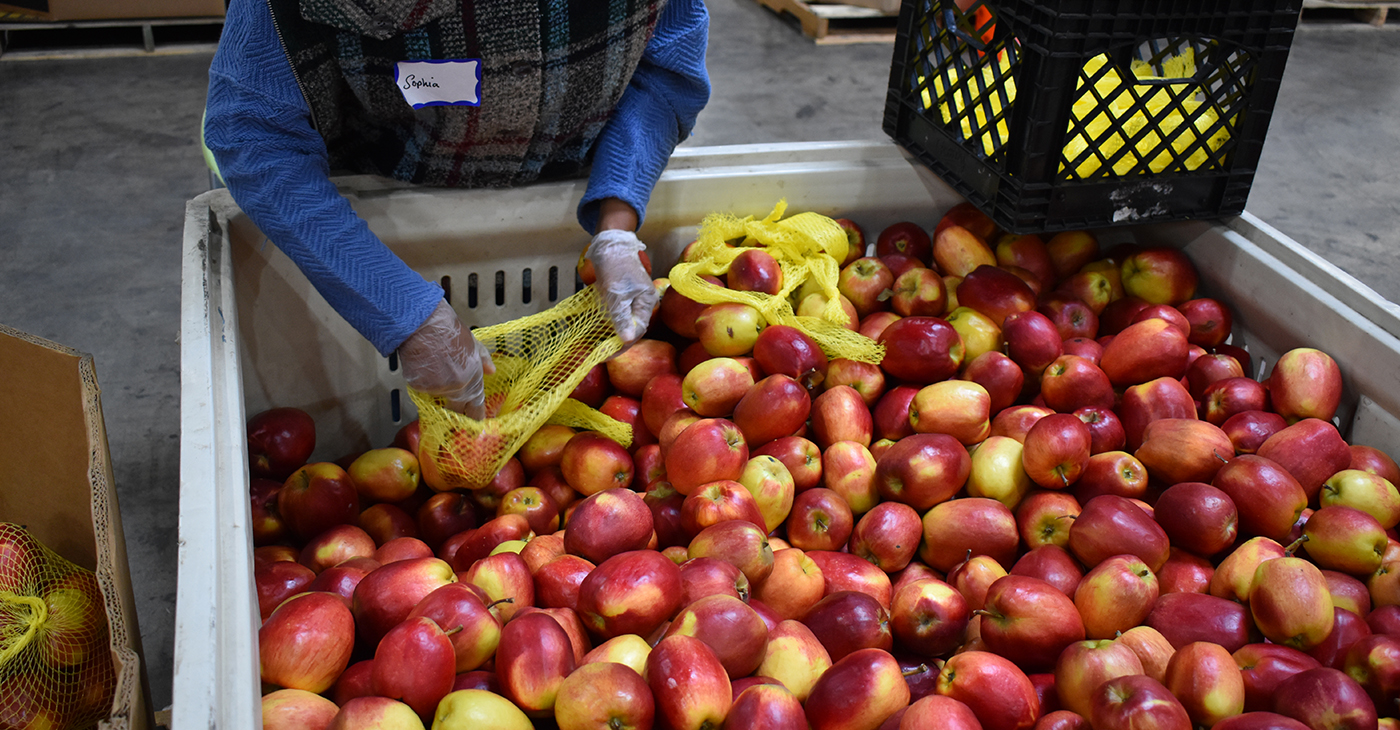Community
Manzanita SEED Community Says Teacher Consolidations Harm Students
Sasaki, Davis and Hutchinson all pointed to not having enough teachers as a root cause of the issue causing consolidations. Sasaki and Davis pointed to plans already in place by the district to improve recruitment.

As Oakland Unified School District’s Manzanita SEED Elementary school lost a teacher on Monday to a consolidation process that placed her at another site, the school’s community is reeling from her absence, and parents and teachers are hoping the process can work differently in the future.
“Kids were crying because their original teacher is leaving,” said Anne Perrone, a third-grade teacher who has worked for OUSD for over 20 years. “They’re nervous because the two months of experience they had with her and the protocols she’d set up are now up in the air.”
OUSD forced a fourth-grade teacher to leave Manzanita SEED as enrollment numbers were far lower than what the district had projected for that site, while other sites, most notably Sojourner Truth Independent Study, had far more students than the district had planned for.
“Given that some of our schools and classes still don’t have permanent teachers, we have to take teachers at the schools with too few students and put them in classes at other schools that don’t have enough teachers,” wrote John Sasaki, OUSD’s director of communications, in an email to The Oakland Post.
The steps in the process of consolidation are guided by the teacher’s contract that OUSD and the teacher’s union, OEA, have agreed to. According to the contract, when a consolidation process requires a teacher to relocate to a different school, the teacher with least seniority at an under-enrolled site is chosen to leave unless another teacher at the site volunteers to leave instead.
In this instance, the process required that a fourth-grade native Spanish speaker leave Manzanita SEED, a school that offers instruction to all students in both English and Spanish. While that fourth-grade teacher asked not to be named in this article, she confirmed she was relocated to Sojourner Truth Independent Study, a OUSD school that is currently offering online learning and does not offer dual language instruction. The site has higher enrollment numbers than anticipated due to COVID.
“The consolidation process that exists didn’t factor in the pandemic, and that our enrollment numbers are going to be impacted by that in ways we have never seen,” said Jill Karjian, a parent to a third-grade student at Manzanita SEED.
The consolidation process is organized around an attendance count taken 20 days into the school year, but Karjian feels the attendance could soon grow at her school if students start opting for in-person learning when vaccines become available for 5- 11-year-olds. The Los Angeles Times reported such vaccines could begin to become available as early as November.
The departure of the fourth-grade teacher also affected the school’s third grade classes. Another Manzanita SEED teacher, who had been teaching third grade, replaced the fourth grade teacher. Three third-grade classes were then merged into two classes, causing class sizes to go from 18 to 27 students. Anne Perrone reports about half her third-grade students have been testing two grades or more behind their grade level for both math and reading due to the pandemic making learning more difficult last year. The lower than usual class sizes had been helpful for getting her students caught up. Now that class sizes have suddenly risen, she’s worried.
“I’m not Wonder Woman,” she said. “I’m not going to be able to reach all the students in the way I want and need to.”
On September 21, four days after the Manzanita SEED community heard official word that their school would be consolidated, Karijian sent out an email, co-signed by 35 other parents, that asked to meet with Superintendent Kyla Johnson-Tramell, Chief Academic Advisor Sondra Aguilera, and Chief Talent Officer Tara Gard, to discuss the situation and propose alternative solutions.
The parents never heard a response. Perrone said teachers and parents had ideas such as bringing in school administrators who have teaching credentials to fill in vacancies, partnering with local teaching programs at universities to offer student teachers the vacancies, and offering increased pay to entice new teachers to fill in vacancies using COVID relief money.
In more than an hour of public comments at a School Board meeting on September 22, teachers, parents and students urged the board to stop the district’s normal practice of consolidations. But there were no resolutions related to the issue proposed and the Board did not take up the issue on their agenda. By October 5, Manzanita SEED had lost their teacher.
“Teacher consolidations can be very painful because they disrupt the relationships that students have made at the beginning of the year, so everyone wants to avoid them as much as possible,” wrote District 1 School Board Director Sam Davis in an e-mail to The Oakland Post.
When asked why the issue was not taken up at a Board meeting, Davis wrote “…for me personally, since no teachers were being laid off, it was not an issue of budgeting but a lack of sufficient staffing for all of our classrooms.” He also pointed out that since “the process of consolidation is part of the contract with OEA,” the board does not have the power to unilaterally change that process. Instead, it needs to be negotiated through OEA.
In an interview with The Oakland Post, District 5 School Board Director Mike Hutchinson said that the issue was brought to his attention at the last minute, when the first schools were being notified of their consolidations, at which point it was too late for him to bring the issue to the Board.
“There literally was nothing I could do substantially besides pressuring behind the scenes at that point,” Hutchinson said. “This is the first time most people have heard of consolidations. I’m hoping with this awareness, we can improve upon this going forward.”
Hutchinson said, in previous years, consolidations had resulted in 20-30 teachers being affected. Sasaki wrote that in the past, the consolidation process has resulted in some teachers being laid off. This year, eight teachers were moved, and none were laid off. Davis wrote that he posed a lot of questions to Johnson-Tramell and her team about consolidations and that teachers being moved was ultimately limited as much as possible.
Hutchinson called the fact that much fewer consolidations happened this year than other years “a victory behind the scenes” but also acknowledged that some schools still felt a devastating impact through the consolidation process.
“This was something that was frustrating this year,” Hutchinson said, “because we can’t address it while it’s already happening. But we can definitely all address it for next year so we don’t have this happen again.”
According to Hutchinson, through contract negotiations with the district, OEA could have more flexibility with the consolidation process. Consolidations do not have to be attached to 20-day attendance counts, class sizes could be lowered, and OEA could propose different methods in its next contract.
“I would really recommend the union start preparing for next year,” said Hutchinson. “If teachers don’t like the way this consolidation process works, they should work to change the language in their contract.”
Sasaki, Davis and Hutchinson all pointed to not having enough teachers as a root cause of the issue causing consolidations. Sasaki and Davis pointed to plans already in place by the district to improve recruitment.
Hutchinson suggested changing the teacher contract to give new teachers who would otherwise be laid off an extra probationary year where the district could work to help improve their performance, so more teachers could get the aid they need to remain in Oakland public schools.
Perrone is frustrated to be stuck dealing with the instability of losing a teacher through consolidation and hopes OUSD can improve the situation in the near future. She calls consolidations a “Band-Aid approach” that does not work to fix anything.
“I think this is a turning point, we can either fix some of these long-term educational problems or we can create more entrenched inequalities that will go on for generations,” Perrone said.
The Oakland Post’s coverage of local news in Alameda County is supported by the Ethnic Media Sustainability Initiative, a program created by California Black Media and Ethnic Media Services to support community newspapers across California.
Activism
Oakland Post Endorses Barbara Lee
Barbara Lee will be able to unify the city around Oakland’s critical budget and financial issues, since she will walk into the mayor’s office with the support of a super majority of seven city council members — enabling her to achieve much-needed consensus on moving Oakland into a successful future.

As we end the celebration of Women’s History Month in Oakland, we endorse Barbara Lee, a woman of demonstrated historical significance. In our opinion, she has the best chance of uniting the city and achieving our needs for affordable housing, public safety, and fiscal accountability.
As a former small business owner, Barbara Lee understands how to apply tools needed to revitalize Oakland’s downtown, uptown, and neighborhood businesses.
Barbara Lee will be able to unify the city around Oakland’s critical budget and financial issues, since she will walk into the mayor’s office with the support of a super majority of seven city council members — enabling her to achieve much-needed consensus on moving Oakland into a successful future.
It is notable that many of those who fought politically on both sides of the recent recall election battles have now laid down their weapons and become brothers and sisters in support of Barbara Lee. The Oakland Post is pleased to join them.
Activism
Oakland Post: Week of March 28 – April 1, 2025
The printed Weekly Edition of the Oakland Post: Week of March 28 – April 1, 2025

To enlarge your view of this issue, use the slider, magnifying glass icon or full page icon in the lower right corner of the browser window.
Activism
Oakland’s Most Vulnerable Neighborhoods Are Struggling to Eat and Stay Healthy
For this story, we focused on eight of the 12 ZIP codes in Oakland, those pertaining to East and West Oakland. The ZIP codes include 94601, 94603, 94505, 94606, 94607, 94612, 94619, and 94621. We chose to concentrate on these specific areas, known as the Oakland Flatlands, due to its longstanding history of extremely low-income households and racial inequalities compared to ZIP codes in the Oakland Hills.

These Are the Contributing Factors
By Magaly Muñoz
On a recent trip to the grocery store in West Oakland, single mom Neemaka Tucker contemplated what’s more important to her family’s needs – expensive fresh produce or cheap instant ramen noodles.
“I’m trying to teach my kids to eat healthy, but then my pocket is like, ‘I’m broke’. Getting the processed foods is going to fill you up faster, even though it’s not good for your body,” Tucker said.
Bay Area residents are spending over $100 more a month on groceries than they were pre-pandemic. Those higher costs are straining wallets and forcing families to choose cheap over healthy, possibly contributing to more health problems. These problems are disproportionately affecting people in East and West Oakland, in neighborhoods primarily of low-income families of color.
Oakland residents are experiencing more health problems linked to poor diets, like diabetes, obesity, and heart disease than before the pandemic, particularly in neighborhoods of East and West Oakland, data shows.
“We see a direct relationship between what we eat and medical problems. What we eat affects our weight, our blood pressure and all those things circle back and have an effect on your diseased state,” said Dr. Walter Acuña, a family physician at Oakland Kaiser Medical.
According to data by UCLA Center for Health Policy Research, about 1 in 10 adults in East Oakland neighborhoods experience food insecurity. That’s twice as many people than in most other parts of the city.
Oakland residents’ health concerns are growing
For this story, we focused on eight of the 12 ZIP codes in Oakland, those pertaining to East and West Oakland. The ZIP codes include 94601, 94603, 94505, 94606, 94607, 94612, 94619, and 94621. We chose to concentrate on these specific areas, known as the Oakland Flatlands, due to its longstanding history of extremely low-income households and racial inequalities compared to ZIP codes in the Oakland Hills.
According to UCLA research, about one out of every five adults under 65 in these areas of East Oakland reported poor or fair health. But these problems weren’t isolated to East Oakland. About one in six adults under 65 reported poor or fair health in areas of West Oakland, like the 94607 ZIP codes.
A handful of ZIP codes (94601, 94603, 94605, 94621) in East Oakland also have the poorest health outcomes of any area in the city. Residents there experience the highest rates of obesity and adult diabetes.
UCLA data shows that there has been a two percent increase in the number of adults diagnosed with diabetes in West Oakland (ZIP code 94607) since 2017- 2018. An estimated 11.8% of adults in 94607 in 2021-22 said they had diabetes, whereas 9.8% reported it several years before.
But the problem is more significant, only a few miles away.
In the 94621 neighborhood in East Oakland, an estimated 16.6% of adult residents reported having diabetes in 2021-2022, and the neighboring ZIPs averaged about 15%, according to UCLA data. 2017-2018 data show that only 11% reported a diabetes diagnosis in the 94621, a 5.6% change from recent numbers. The ZIP code estimates are higher than the states’, county’s, and city estimates—11%, 12.4%, and 12.3%, respectively.
Doctors working with Oakland and the larger Alameda County area are seeing an increase in the number of people coming to their offices with chronic health issues in the last few years.
Acuña said he’s frequently treating more and more adults with diabetes and hypertension.
Patients often tell him that it’s easier to afford unhealthy, cheap food than it is to afford the things that are going to make them feel better and stay healthy, he said
Dr. Steven Chen, Chief Medical Officer of Alameda County’s Recipe4Health, said that he’s seeing more kids across the region suffering from obesity, or adults on the brink of developing chronic illnesses, than in previous years.
“Chronic disease is a big epidemic. What’s the root of it? I think food is a big component,” Chen said.
He has seen evidence of improved health when people have access to better food. People with Type 2 diabetes experience a boost in metabolic and sugar management to healthy levels, and those with high blood pressures experience normal numbers.
Recipe4Health is a county-wide program that uses food-based interventions to treat and prevent chronic conditions, address food insecurity, and improve health and racial equity. The program provides up to 12 weeks of groceries for people who are at risk or are experiencing food insecurity.
It’s important for public sectors to have these kinds of investments locally because the results are tangible, he said.
“If our values are that no one gets left behind and that everyone should have an equal opportunity to health and health equity, then we need always to ensure that we are serving those communities that often are left behind,” Chen said.
Experiencing food insecurity in Oakland
Unfortunately, healthy food is becoming increasingly difficult for Oakland residents to access. Over the last five months, The Oakland Post heard from over 50 residents about their struggles finding and affording healthy food. We visited food banks, talked with people at markets and food distribution events, and distributed an online survey.
We learned that residents are travelling to other nearby cities to get cheaper groceries, financial assistance programs like CalFresh are challenging to navigate, wages are low, and food is getting more expensive while the quality appears to be dropping.
Andres, who asked us not to use his last name due to his undocumented status, said he often relies on food distribution from organizations like the Street Level Health Project for his weekly groceries. He wouldn’t be able to eat complete meals otherwise, due to the lack of consistent employment at his car washing job during the winter months.
With eight people living under one roof and only three adults contributing to the household income, he said things are tight.
“During these months, we’re always backed up on paying our bills, including rent, and we’re trying to do more with what little that we have, which is not much,” Andres said.
Andres’ biggest complaint about grocery shopping is the lack of fresh and healthy food that is affordable and good quality. He’s been to food banks and grocery stores where the produce rots within a day or two of receiving it, forcing him to buy fast food in order to feed his family.
Down the street at the Unity Council’s weekly grocery distribution, Mayra Segovia, a single woman in her 50s, said she visits this location almost every week to get food. Her fixed income on Social Security makes it difficult to afford her basic necessities.
Segovia said she receives CalFresh funding to pay for her groceries, but the almost $300 assistance is not enough to get her through the month, so she gets creative. She often does favors for local vendors in exchange for meals. Even with the Social Security checks of a little over $1,000 a month and other resources like subsidized housing, the cost of living is going up. She’s blaming the government for their contribution to the problem.
“We’re not all rich like Donald Trump and all those corrupt politicians, we don’t have that much money like that,” Segovia said.
Social service assistance is falling short
Several people we spoke with said financial food assistance like CalFresh isn’t supplementing the gaps in their budgets.
Neemaka Tucker, mom of two elementary-aged kids, said she receives $123 a month from CalFresh, yet she’s spending almost $600 on groceries at the store. She feels like she should be getting more assistance, especially considering her lower, single income. “I’m appreciative [of the CalFresh funds] that I get anything because every little bit helps, but it’s still not enough for my family,” Tucker said.
A lack of grocery store options in West Oakland has also made it even harder to get food on the table, Tucker said.
There are more convenience stores than grocery stores within walking distance to her home on the northeast side of West Oakland, and the prices seem to be exacerbated because of their limited food stock, Tucker said. A gallon of milk at the store could run her up to $3.80, but at the local convenience market, it’s nearly $6.
“I just find that the majority of the money that I’m spending is on the travel to get the food, then on the food itself,” Tucker said.
Healthy groceries are a necessity to manage Tucker’s health. She is diabetic and has high blood pressure, so eating and buying fresh produce is important because keeping her symptoms at bay is a must for her health. It’s been difficult to get what she needs for her body to maintain her chronic health problems because she often battles with lack of affordability of what she’s buying, she said.
“I find myself trying to figure out what’s healthy for each person and then have enough of it so we all can [eat well],” Tucker said. “Back in the day, bread and potatoes used to be staples to get your kids full, but food like that makes me sick because that’s too much [carbohydrates] since I have diabetes.”
Both her kids are athletes who also need healthy food. She’s finding that even though her kids don’t eat meat, which tends to be expensive, she’s still spending more than she’d like to on fruit and vegetables.
In Oakland, the local investment is low
In the last year, the city has cut grants to nonprofits like Meals on Wheels, which serves 3,000 hungry seniors, and Street Level Health Project, which provides groceries and meals to undocumented day laborers. Tax measures, like the Sugar-Sweetened Beverage Tax, were intended to help decrease the food and health crisis but are also not being managed in the way Oakland residents voted for, according to community leaders and advisory board members. The majority of the tax money is going towards funding city agencies.
The Oakland Post contacted city and county officials several times for comment but did not get a response.
Across the Bay Area, San Francisco is investing millions to address food insecurity through a pilot program that establishes free grocery stores in food desert districts. Shoppers of the pilot market said they have seen a positive change to the way they feed their families and how much they’re able to save every month.
Oakland resident PC, who chose to use an abbreviated version of his name to protect his privacy, said he’d be interested in seeing a market like the one in San Francisco because it would alleviate the tight budget he has for himself.
PC said he’s had some unpleasant experiences with food distribution workers being rude to residents waiting for grocery bags. “The line is already long as it is and can sometimes feel shameful when you’re going through hard times,” PC said, so an option to get free food in a setting that resembles a market would be ideal.
The garden lead for West Oakland’s People’s Programs, ab banks, helps deliver fresh produce from a local garden to households in the projects, because the need for healthier options has been particularly high in recent years, they said.
People’s Program serves around 170 people in the 94607 area with groceries, along with a mobile health clinic and free breakfast program. Their goal is to serve a community that already deals with its own set of disadvantages, and looks to show people that not everything needs to contribute to a bigger gain and people have the right to use the local land to grow the food they need.
Banks said they see firsthand what the lack of investment in West Oakland has done to folks: homelessness, priced out living situations, environmental racism, and lack of food access.
They explained that although they feel a duty and a calling to the work at People’s Program to help an underserved neighborhood, they questioned how the city is pouring millions of dollars towards finding solutions to Oakland’s biggest problems but no significant change has happened yet. banks said there are basic necessities that should be birthrights and not restricted to what the government thinks people need.
“[The investment] is not enough. There’s no access to fair housing, not enough access to food, not enough access to healthcare. But that’s just not specific to Oakland, that’s a United States problem,” banks said.
Reporter Magaly Muñoz produced this story as part of a series as a 2024 USC Annenberg Center for Health Journalism Data Fellow and Engagement Grantee.
-

 Activism4 weeks ago
Activism4 weeks agoUndocumented Workers Are Struggling to Feed Themselves. Slashed Budgets and New Immigration Policies Bring Fresh Challenges
-

 Activism2 weeks ago
Activism2 weeks agoWe Fought on Opposite Sides of the Sheng Thao Recall. Here’s Why We’re Uniting Behind Barbara Lee for Oakland Mayor
-

 Activism4 weeks ago
Activism4 weeks agoOakland Post: Week of March 5 – 11, 2025
-

 #NNPA BlackPress2 weeks ago
#NNPA BlackPress2 weeks agoRev. Dr. Jamal Bryant’s Black Church Target Boycott Mobilizes 150,000
-

 Activism2 weeks ago
Activism2 weeks agoSan Francisco Is Investing Millions to Address Food Insecurity. Is Oakland Doing the Same?
-

 #NNPA BlackPress4 weeks ago
#NNPA BlackPress4 weeks agoTrump Moves to Dismantle Education Department
-

 #NNPA BlackPress4 weeks ago
#NNPA BlackPress4 weeks agoFighting to Keep Blackness
-

 #NNPA BlackPress2 weeks ago
#NNPA BlackPress2 weeks agoRecently Approved Budget Plan Favors Wealthy, Slashes Aid to Low-Income Americans



























































